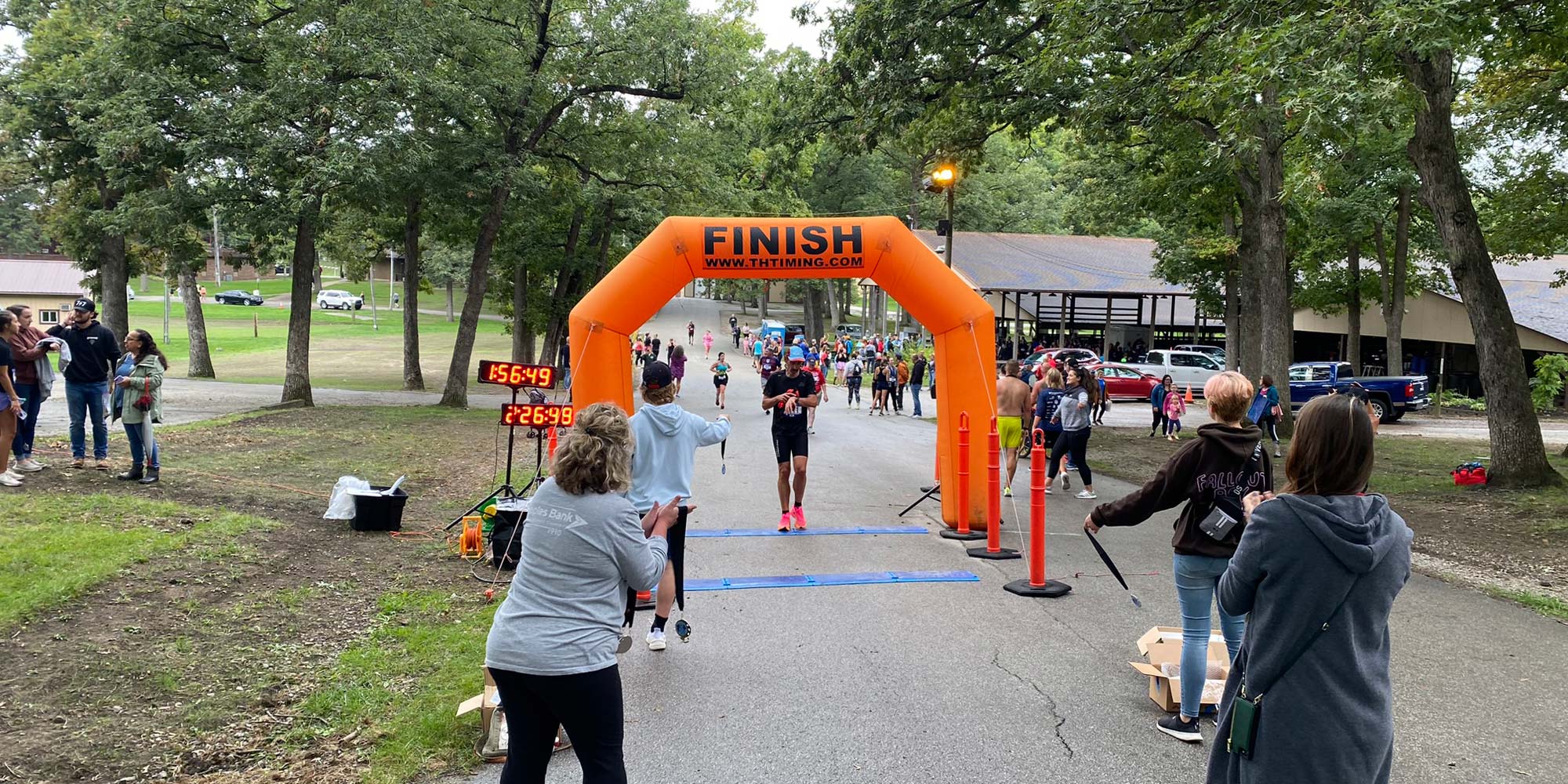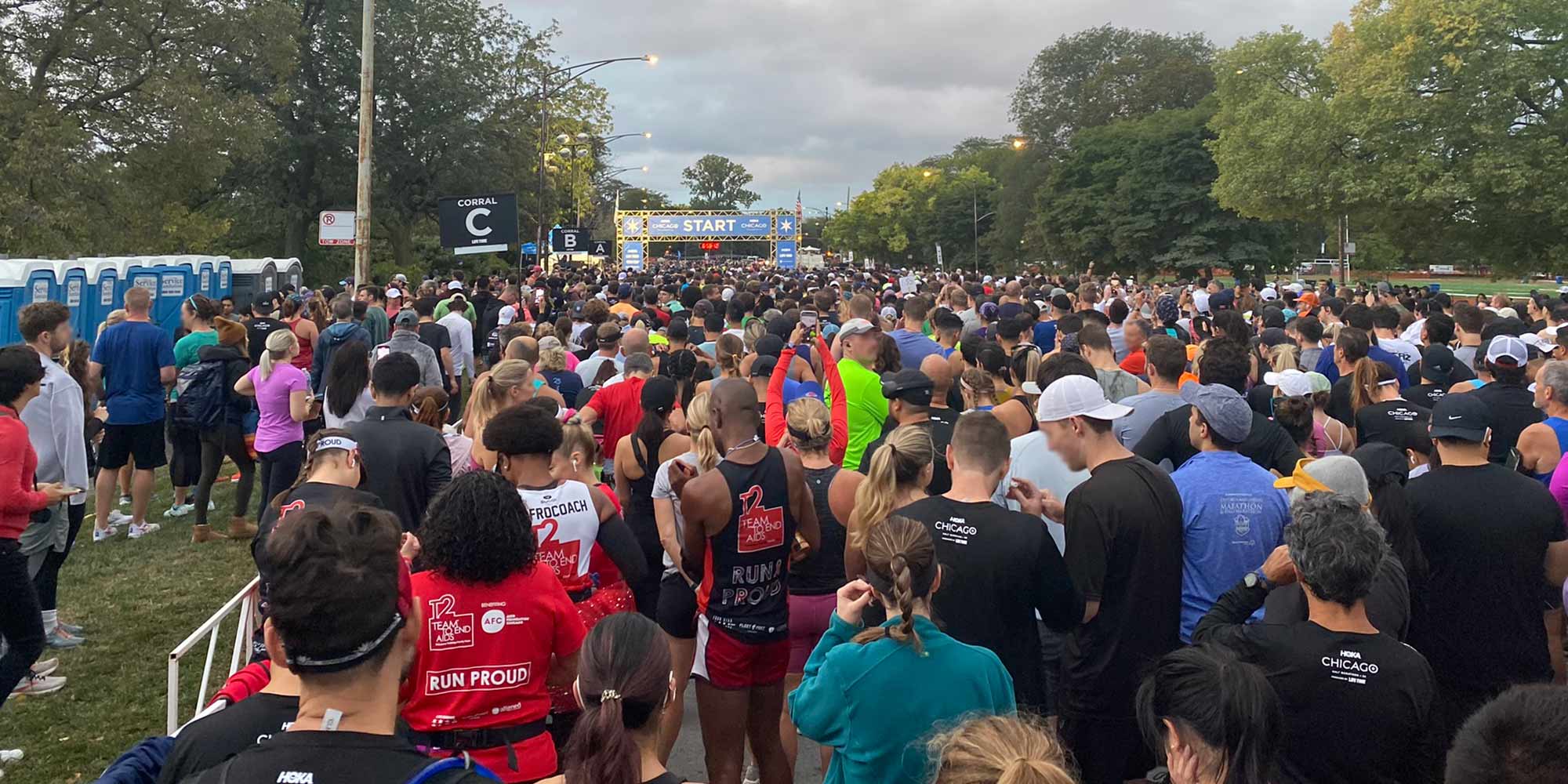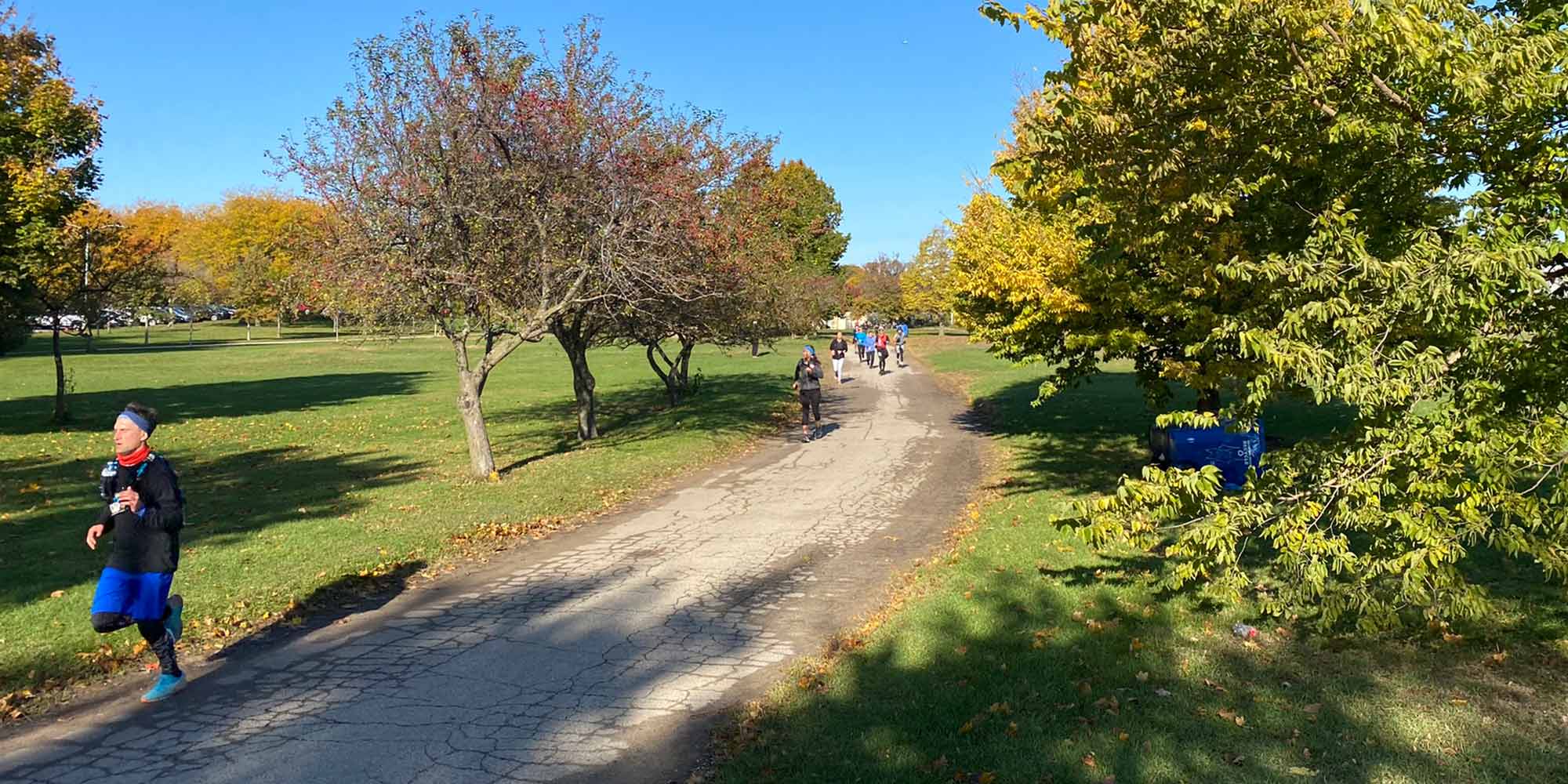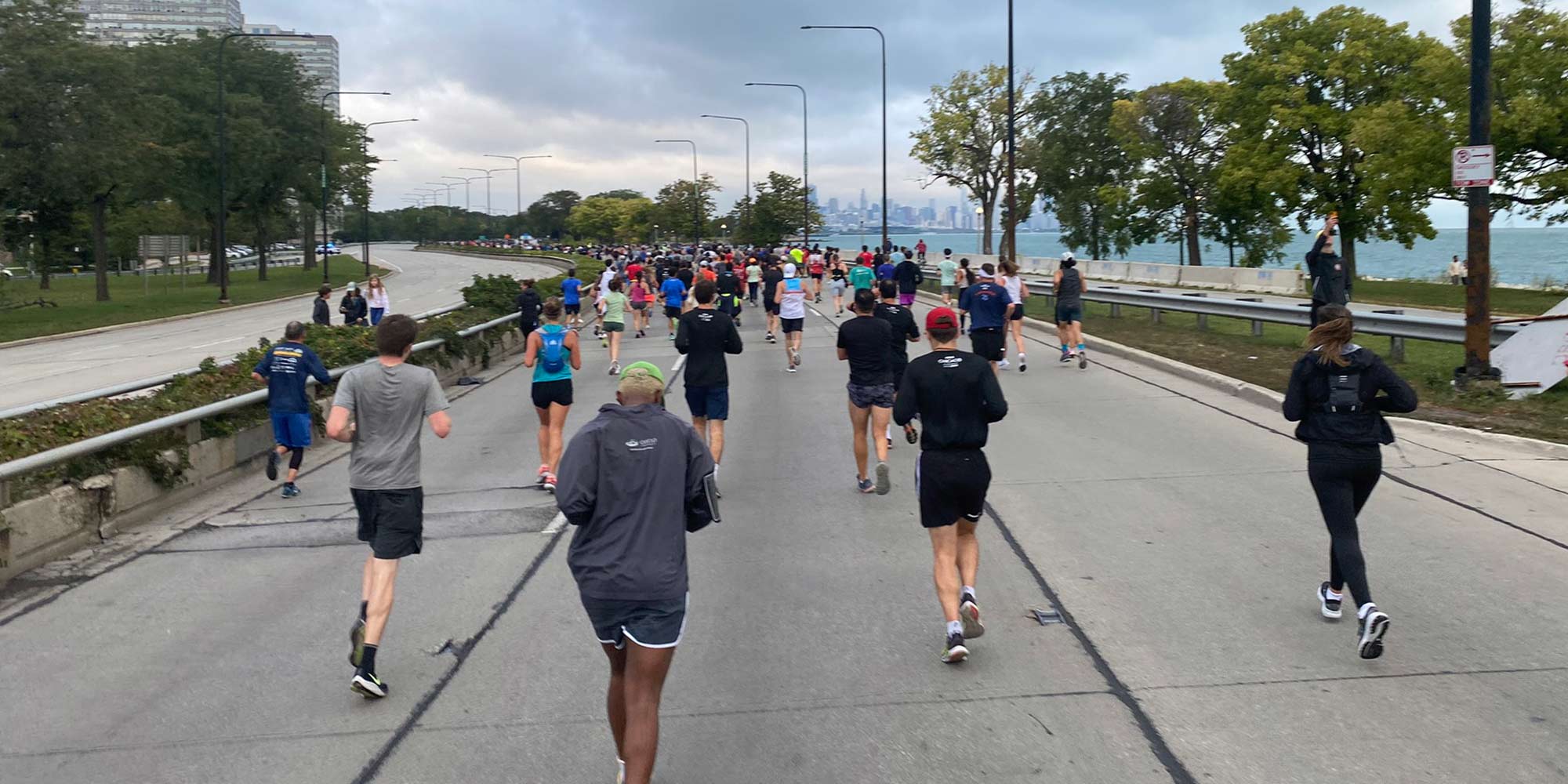“Endurance is not just the ability to bear a hard thing, but to turn it into glory.”
- William Barclay
Scottish Author
“If It doesn’t challenge you, it won’t change you.”
- Fred DeVito
Fitness Author & Business Owner
“Mental will is a muscle that needs exercise, just like the muscles of the body.”
- Lynn Jennings
Olympic Medalist Runner
It's a Perfect Distance
A half marathon doesn’t have the prestige of a full marathon, but it’s still a great distance. They’re my favorite races to run, here’s why:
- It’s a gateway distance. After you complete a half-marathon you’ll progress as a runner and you can set your sights on a full marathon.
- The training and the race are challenging, but reasonable.
- It’s much cheaper than a full-marathon.
- There are more half marathons than full marathons. For example, Chicago in 2023 has one full marathon and seven half marathons. You’ll have a lot of choices in terms of dates and locations.
- It’s practical to do a half marathon every year. It’s not a huge commitment.
- It’s not as competitive as a full marathon. Full marathons tend to attract experienced runners that take it very seriously. It’s easier to compete in a half-marathon (in terms of overall ranking and age group ranking).
- It’s an intermediate race. Overall it has a more serious vibe than a 5K or 10K.
The Prep Work
Picking a Race
There are a lot of half marathons every year, so if you have to travel it won’t be far. You want to check race reviews and consider the weather. I’m not a big fan of summer half marathons because of the heat. The website runningintheusa.com is great for finding a race.
Picking a Training Plan
It’s a good idea to follow a training plan. You’ll run a faster time and learn to stick with a plan, there’s a lot of value in that. In terms of pick a plan, you have a few options:
- Get one for free online. There are free training plans available on this website.
- Pay for one - either online or buy a running book with plans.
- Hire a running coach that will make a custom plan for you. This is obviously going to be the most expensive option.
You can compare multiple plans first to see what’s out there. Some require more training than others, so it’s important to find one that fits your goals. For example, if you’re just trying to finish and you are planning on running at a 11 minute pace, you want to pick a beginner plan, not an intermediate or advanced plan.
Equipment - Get Your Gear in Order
Shoes Let’s start with the most important piece of equipment. Most experts say a high quality pair of running shoes will last between 300 to 500 miles. So you probably only need one pair of shoes to complete the training and the race.
Apparel You’re going to be outside running in public a lot, so you may as well look good and buy some new clothes. Also a good idea: nice running socks, waterproof socks, a running belt/fanny pack, a hat and athletic sunglasses.
Watch A smartwatch is invaluable for running and especially half marathon training. You’re going to be tracking distances and time regularly. You could technically do it with your phone but it’s so much easier with a watch. They’re affordable and they’re great for everyday use as well.
For Your Skin Vaseline, sunblock and bug spray. Sunblock is very important, you’re going to spend a lot of time in the sun and sunburn will negatively affect your performance. Vaseline (petroleum jelly) for longer runs is essential.
Prepare Yourself For What’s Coming
Half marathon training isn’t a massive commitment like full marathon training, but it’s still a commitment. You’re going to have to run on work days, when you’re in a bad mood, when it’s hot and humid or when you feel like doing something else. Even if you love running, the training is going to feel tedious and boring at times. But it’s also a fun adventure. You’ll get through it, and you’ll be a better runner by the end of it.
Picking a Goal Time
You don’t have to set a goal time, but it’s beneficial to have a target to focus on. You can analyze past races or runs to set your goal. The time should be challenging, but realistic. There is more information on the pacing tools page.
The Training
Following the Plan
You should aim to follow the plan exactly. Over the course of two months, some stuff is going to come up, so if you miss a few runs it’s not the end of the world. Make some adjustments in the plan and move on. Just don’t miss a run unless you have a good reason.
The Long Runs
The long runs are the most important. You’re going to want to bring a snack (like energy bars or gels) and drink a lot of water. This is a good chance to experiment with your fueling. For example, you can try eating a gel every 45 minutes. For a lot of the runs, you are going to run them at a slow pace, and that’s ok. If you have to take a break or power walk for some of the time, that’s ok too.
Speed Work
Most plans are going to have speed work (running at a fast pace for a certain distance) as part of the plan, and it’s important if you have a goal time. I recommend doing the speed workouts at a track if you have one available. It’s easier to focus because you don’t have to worry about pedestrians, cars, traffic lights, etc. It’s also helpful to know the exact distance you are running. Trails are another good option.
Pacing
Other than the speed work runs, you should be running at a pace that’s comfortable but challenging. The harder you train the faster your time will be for the most part. That being said, it’s a long and demanding training plan, so you don’t want to burn yourself out or get injured. Find a good balance.
Where to Run
I like to change up my route so it doesn’t get boring, and I’ll use different routes depending on how far and fast I’m running. My trail or track runs are almost always faster than my neighborhood runs. Running in a neighborhood on the other hand is good because you can just walk out the door and start. Here are some things that are good on a running route:
- Public bathrooms
- Water fountains
- A store in case you want to buy a drink or use the bathroom.
- Shade - trails with trees are good for this.
- Neighborhoods with sidewalks and lights if you’re going to run at night (a flashlight is helpful as well).
- A neighborhood with low car and pedestrian traffic.
Running Other Races During Your Training
If you’re serious about lowering your time, it’s a good idea to combine races. You will not run as fast in your training as you will in an organized race. Your adrenaline is going, there are water stops, and your time is going to be posted online. A 5K or a 10K are easy to work into your plan. Another option is to run two half marathons in the same year.
Avoiding Injuries
All of that time and energy you put into running is going to be pointless if you get injured. The good news is that a lot of injuries are preventable, here are some quick tips:
- Start the training in good shape. Start running months before the training period begins.
- Take stretching seriously. Do dynamic stretches before and static stretches after every run.
- Do some type of strength workouts before and during the training.
- Don’t do anything that could potentially injure you, especially stuff you aren’t used to. Things like softball, basketball, or moving a heavy couch…just don’t do them.
Diet
You probably already know which foods are healthy or unhealthy, so I'm just going to give some brief diet tips that are related to running and training. There is a diet page that has more general diet information.
Eat healthy after you run.
It’s easier to eat healthy when you’re hungry. It’s good to have some food prepared or something that is relatively easy to cook when you’re done running. I usually eat something that is light in carbs and heavy in protein, like ground turkey and eggs. You don’t want to return home with nothing to eat, it makes it way too easy to go out to a restaurant.
Dehydration
There are two dehydration tips I want to give. The first is this - don’t go to bed dehydrated. It can cause a bad headache that can ruin the next day. This has happened to me before when I’ve gone on a long run on a hot day. It takes some effort to rehydrate after that. The second is this - drink more water during your runs because it will affect your performance. You can definitely hit “the wall” from dehydration.
Alcohol
Alcohol and half marathon training don’t mix. It’s a good idea to limit it to only a few drinks on special occasions. There will be plenty of time to drink once it’s over.
Junk Food
Junk food is especially bad to eat on the day of a run or the day before a run. It will upset your stomach and hurt your performance.
Eating On Race Day and During the Race
I cover this in “The Race” section below.
Carb Loading
Carb loading is a diet strategy used by runners in the days before a long run or race. The idea is to increase carb intake so you can store more energy. It can help a runner avoid hitting ‘the wall’ in the later stages of a long run.
- Practice carb loading throughout your training. You don’t want to be trying anything new in the week before your race.
- Carb loading is only necessary for runs that are 90 minutes or longer.
- Start carb loading 4-6 days before the race. For a half marathon or shorter do 4 days, for a full marathon do 6. Gradually start eating more carbs, and in the two days before the race your diet should be about 80% carbs. Those two days are the most important.
- You don’t need to eat more calories than usual. Don’t feel like you need to stuff yourself, that’s going to do more harm than good.
- Keep it simple and don’t overthink it. It doesn’t have to be an exact science. Doing calculations like ‘X grams of carbs per pound of body weight’ is overcomplicating the process for most runners in my opinion.
- The day before the race you should eat your final meal at around 4pm or earlier. That will give your body more time to digest the food.
- More info on carb loading
The Race
You’ve probably already run an organized race, if you haven’t, be sure to check out this page - completing your first race. I’m assuming you already know about bibs, timing chips, etc. These are tips that are specific to a half marathon.
Preparation
Get a good stretch the day before. Stick with what you’re used to. When you eat your big meal the day before you should do it earlier in the day, around 2pm. That way your body will have plenty of time to digest it.
Prepare everything ahead of time. Make a checklist that includes all of the race info and everything you need to bring. Lay out your food, equipment and clothes the night before. Tell your friends and family where to meet you on the course for a quick photo. Doing prep work will make the race day less stressful.
The Weather
The weather on race day is important and it can drastically affect your time if it’s hot out. You have no control over it, so just roll with whatever weather you get and be positive.
Clothes
Since the race is long, the weather is going to change a lot from the start of the race to the finish. It’s a good idea to bring an old throwaway sweatshirt that you can take off once it gets hotter, it’s also good to have when you’re waiting around outside before the race starts.
Don’t wear anything you haven’t run in before and you should dress like it’s 20 degrees warmer than it actually is. Pay attention to the wind and the rain as well. I would also definitely recommend bringing a winter hat and gloves if it’s going to be somewhat cold, you can always take them off. If there is heavy rain expected you can wear waterproof socks. Also bring a hat - rain hitting you in the face for two hours is annoying.
Race Day Morning
You should eat as soon as you wake up. I usually eat something light like two bananas and a bagel. You already ate a large amount of carbs the day before so you shouldn’t be too hungry. I also like to drink coffee as soon as I wake up because it’s a laxative and I want to go #2 before the race - not during it. Going on a short jog after I drink the coffee will make me have to go as well.
I usually drive to races. If you don’t already use the app Spot Hero, start using it. Not only is it way cheaper, but you know exactly where you’re going to be parking ahead of time. Arrive with plenty of time to do your warmup stretches and prepare mentally.
Eating During The Race
During a half marathon I eat a 100 calorie gel every 45 minutes. I weigh around 200 lbs, so you might eat less than that, but eating once every 45 minutes has always worked for me. I will also drink some Gatorade during the run, which most races have. I prefer gels (the ones with caffeine in them) because they’re fast to consume, it’s just a jelly in a packet that you squeeze into your mouth. Other people prefer something dry like a granola bar. As I said before - practice with your fueling during your training. More Info
Peeing During and Before the Race
You do not want to pee during the first few miles of a race. The first set of on course porta potties will usually have a line. You don’t want to add four minutes to your time for no reason. Arrive early so you’ll have plenty of time to go. Also, do a light warmup or jog before the race, your body will retain water if it knows you’re exercising.
Marathons will have a designated section for all the runners to wait at before the race. Some will have an indoor bathroom to use but most only have porta potties. For some reason there is often one set of porta potties that has a 20 minute line and then another set that has no line, I’ve seen this multiple times. Scope out the whole area when you arrive.
Pacing Strategy
Most advice that I’ve heard says to run the half marathon at an even pace. So if your goal time is two hours, you should run each mile in 9:10. I prefer this method because it keeps it simple. The less you have to think during the run the better. This is also where a smartwatch helps a lot, you don’t have to calculate your pace, the watch does it for you.
If you run at your goal pace and you get to mile 10 or so and are feeling great, then you can pick up the pace. Breaking your goal time is always good. If you can’t keep up with the pace towards the end of the race then just slow down, don’t quit. Sometimes you have to roll with the punches and adjust the plan.
If you train well you shouldn’t have to walk. But you never know what’s going to happen or how you’re going to feel. A combination of running and walking is sometimes what’s necessary to get across the finish line.
You Finished! Now What?
As far as recovering from the marathon, I think it’s pretty much self explanatory - sleep, eat, stretch, and hydrate. You’ve already done some long runs, so nothing should be too surprising.
Here are some ideas on what to do after the marathon:
- Go do the things that you wanted to do but couldn’t: play golf, drink with friends, attend a sporting event, lift weights, go on vacation, whatever it may be.
- Run more races. You’re already in good shape, now might be a good time to set a PR for a 5K or 10K. You can also run another half marathon if you were disappointed with your time. You already did most of the work anyway.
- Address something important that you neglected. Maybe your work performance went down a bit or you didn’t spend enough time with your family.






